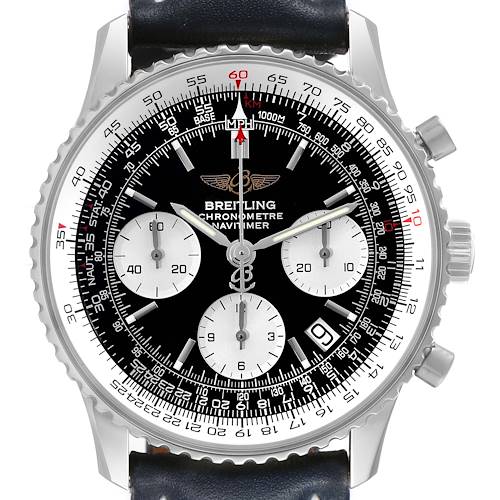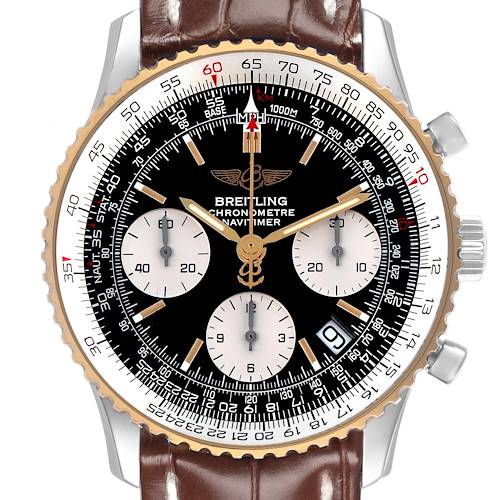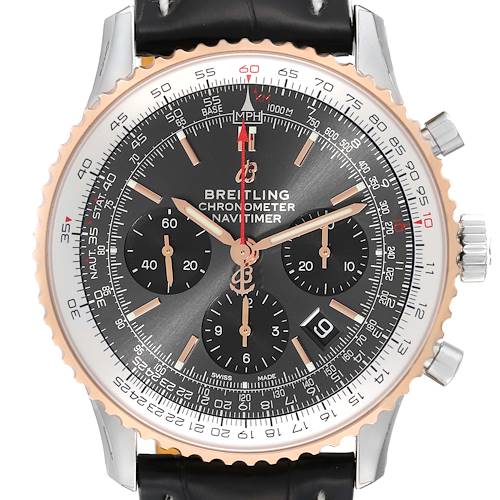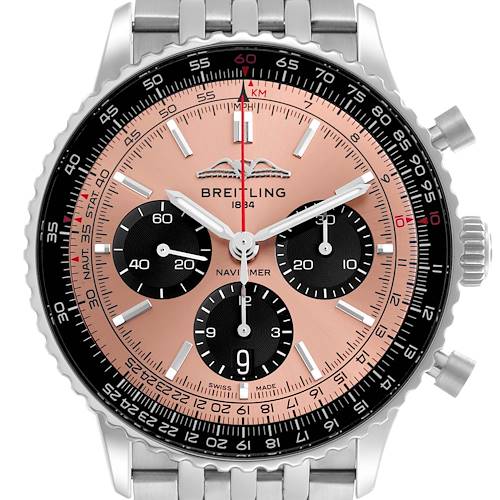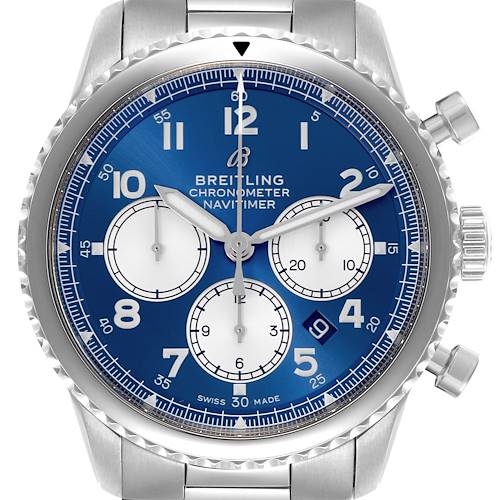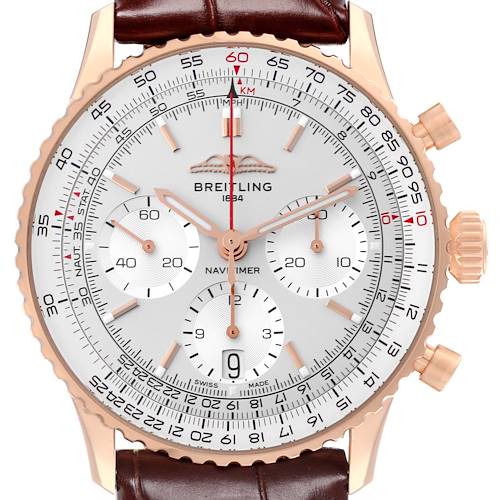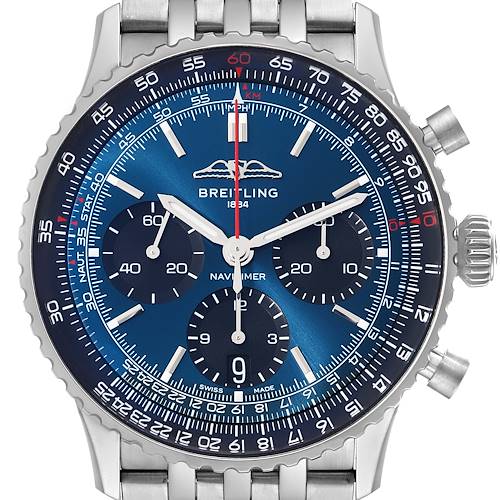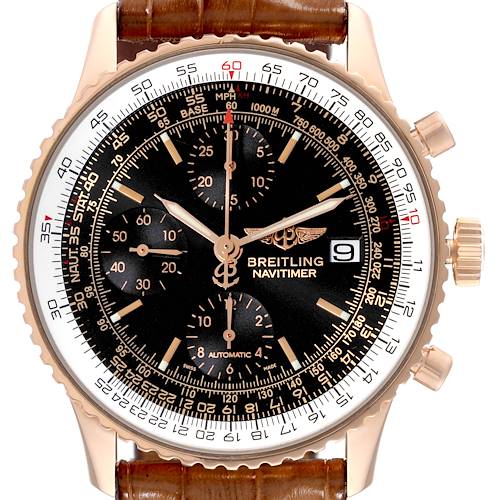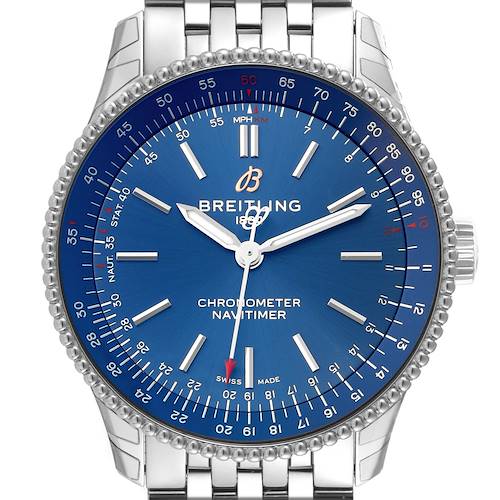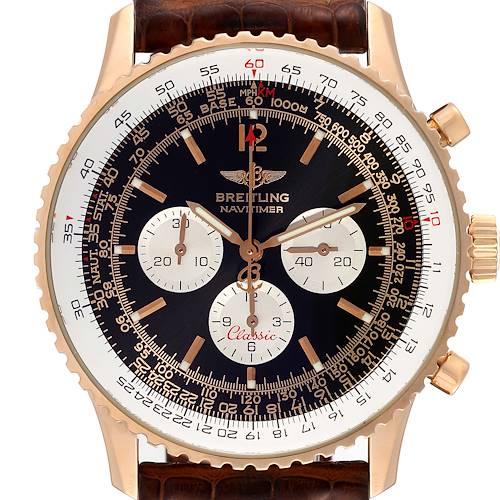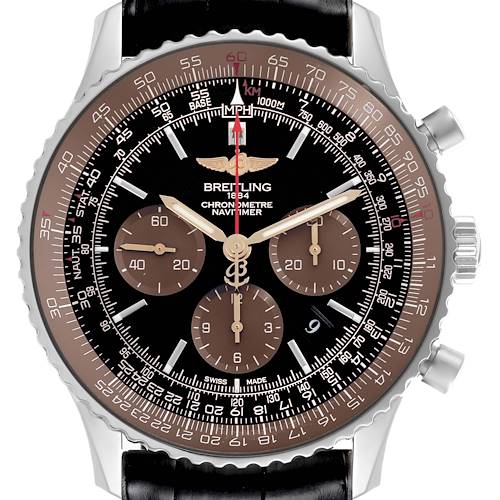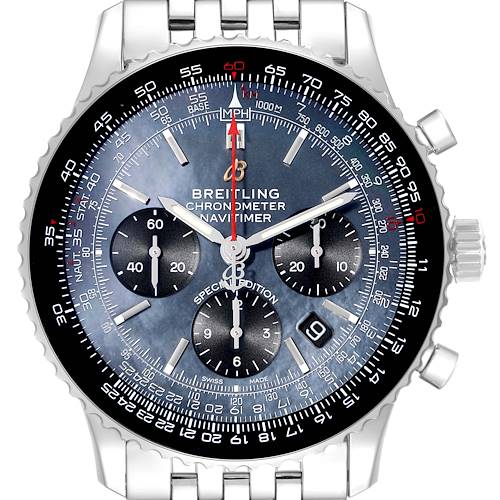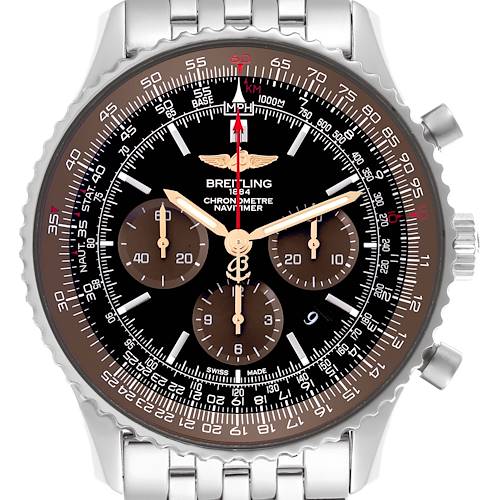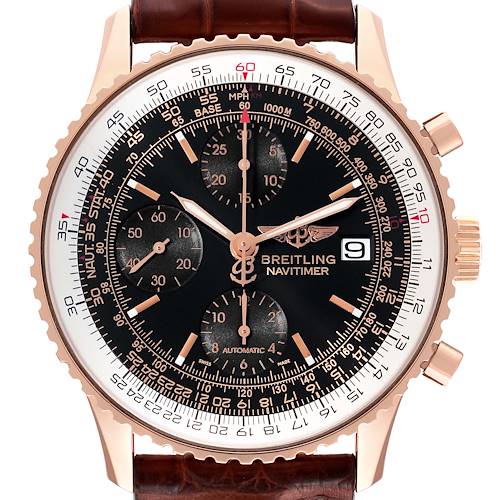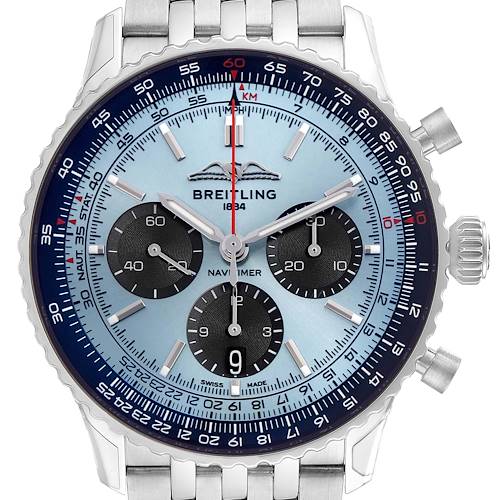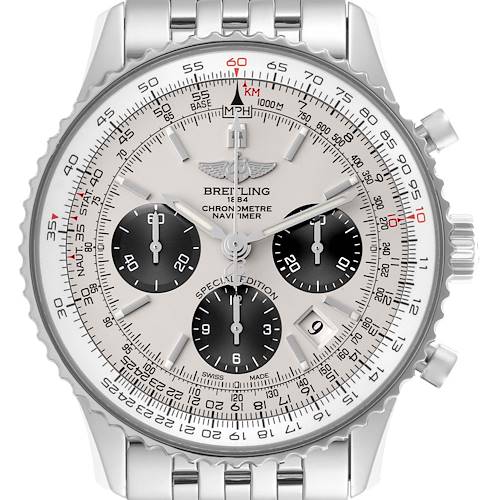- CALL US (404) 814-1814
- LIVE SUPPORT
- EMAIL US
-
WISHLIST (0)
-
CART(0)
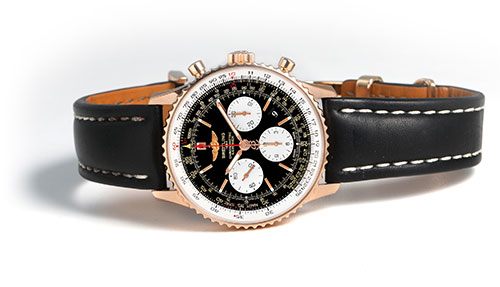
Breitling Navitimer Watches
1,014 MATCHES FOUND
Noteworthy aviation entities like Boeing and the Aircraft Owners and Pilots Association have favored the Navitimer. Today, Breitling Navitimer watches enjoy widespread adoration among collectors of all experience levels, appealing to both men and women. Whether you're a pilot or a business leader, the Breitling Navitimer offers unparalleled performance coupled with refined elegance.
IN STOCK

Breitling Navitimer 01 Black Dial Steel Mens Watch AB0121 Box Card
$6,395
SwissWatchExpo ARCHIVE - RECENTLY SOLD
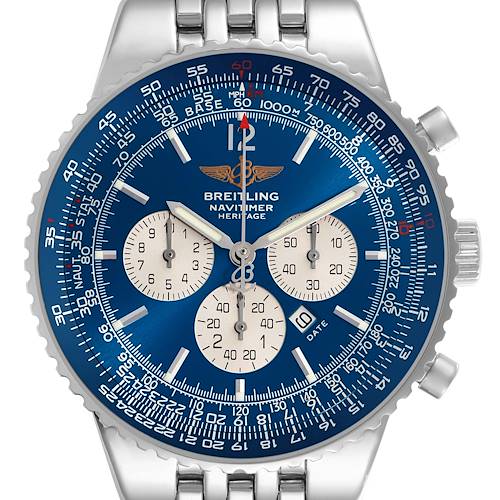
Breitling Navitimer Heritage Blue Dial Steel Mens Watch A35350 Papers

Breitling Navitimer Automatic 35 Steel Ladies Watch A17395 Card
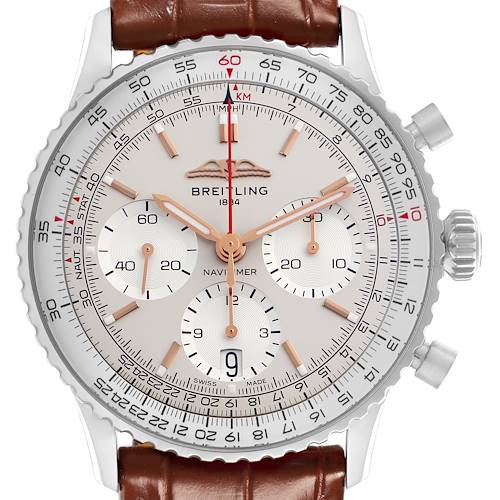
Breitling Navitimer B01 Chronograph 41 Steel Mens Watch AB0139 Box Card

Breitling Navitimer B01 Rose Gold Black Dial Mens Watch RB0138 Box Card
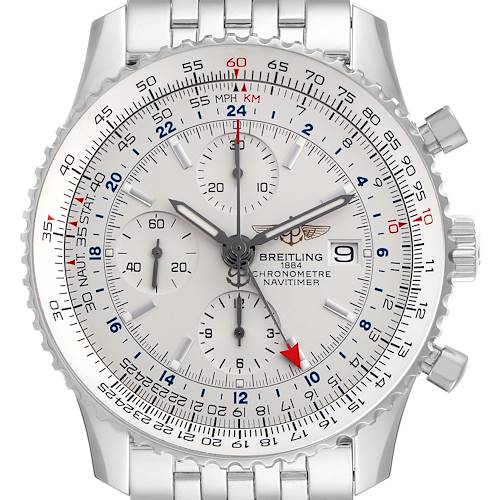
Breitling Navitimer World GMT Silver Dial Steel Mens Watch A24322
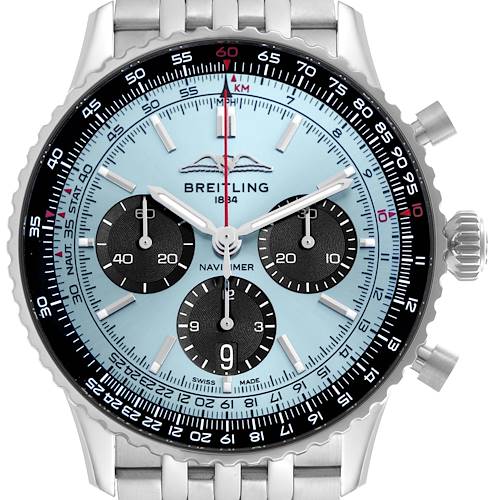
Breitling Navitimer B01 Blue Dial Steel Mens Watch AB0138 Box Card
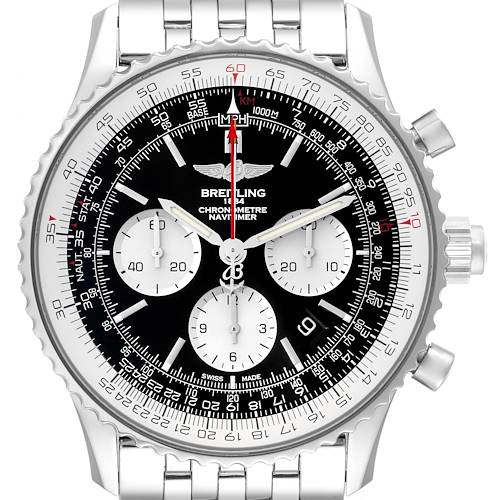
Breitling Navitimer Rattrapante Chronograph Steel Mens Watch AB0310 Box Card

Breitling Navitimer 1 Black Dial Steel Rose Gold Mens Watch U13324 Box Card
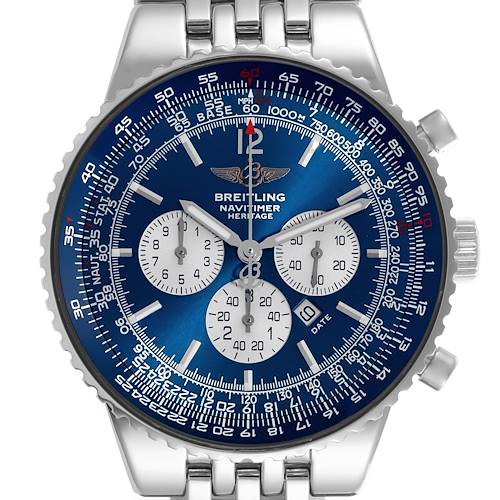
Breitling Navitimer Heritage Blue Dial Steel Mens Watch A35350 Box Papers
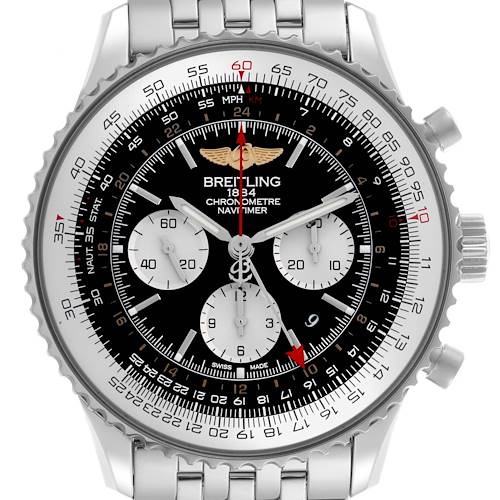
Breitling Navitimer GMT 48 Black Dial Steel Mens Watch AB0441 Box Card

Breitling Navitimer 01 Limited Edition Silver Dial Steel Mens Watch AB0123
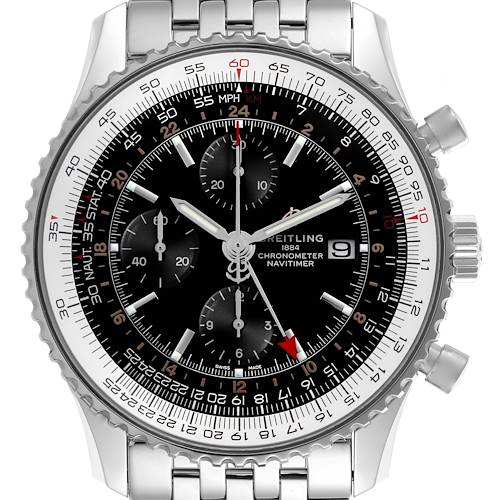
Breitling Navitimer World Black Dial Steel Mens Watch A24322 Box Card

Breitling Navitimer Chronograph Silver Dial Steel Mens Watch A23322 Box Card
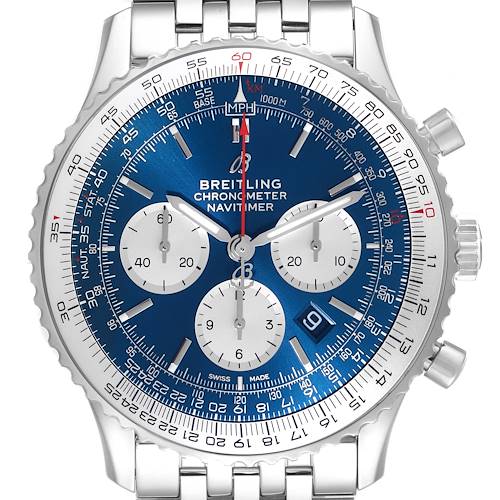
Breitling Navitimer 01 46mm Aurora Blue Dial Steel Mens Watch AB0127 Box Card

Breitling Navitimer Heritage Blue Dial Automatic Mens Watch A35340
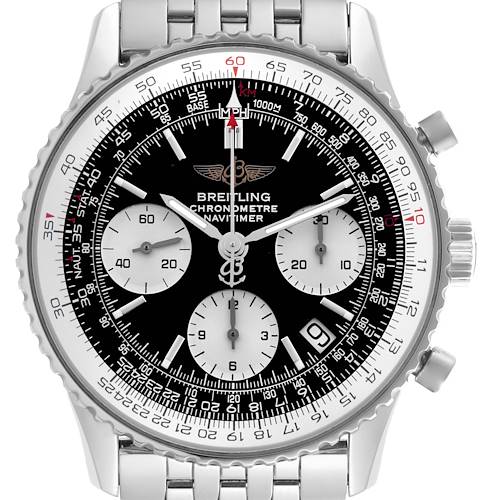
Breitling Navitimer Black Dial Chronograph Steel Mens Watch A23322
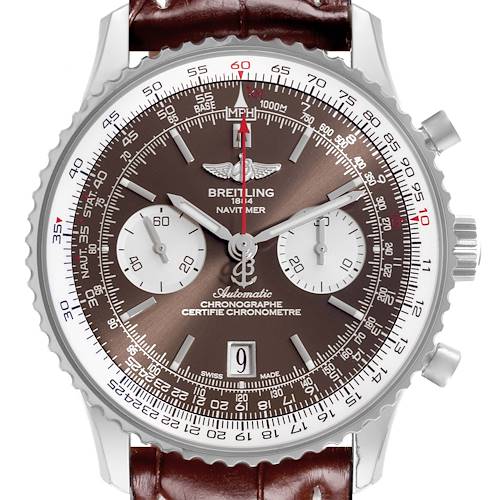
Breitling Navitimer Panamerican Brown Dial Mens Watch AB0126 Box Papers
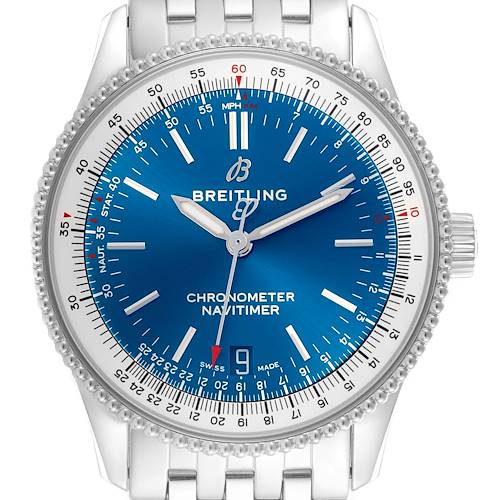
Breitling Navitimer 38 Automatic Blue Dial Steel Mens Watch A17325 Box Card

Breitling Navitimer B01 Silver Dial Steel Mens Watch AB0138 Box Card

Breitling Navitimer 1 Silver Dial 41mm Steel Mens Watch A17326
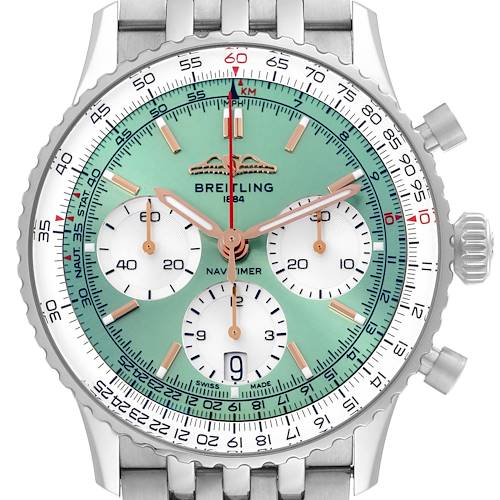
Breitling Navitimer B01 41 Green Dial Steel Mens Watch AB0139 Box Card
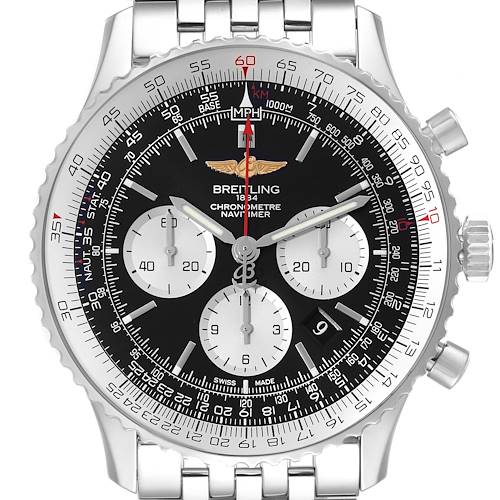
Breitling Navitimer 01 46mm Black Steel Dial Mens Watch AB0127 Box Card
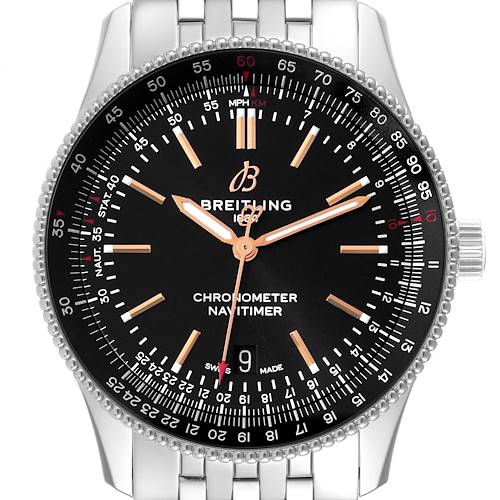
Breitling Navitimer 1 Black Dial 41mm Steel Mens Watch A17326 Box Card

Breitling Navitimer 1 Silver Dial 41mm Steel Mens Watch A17326
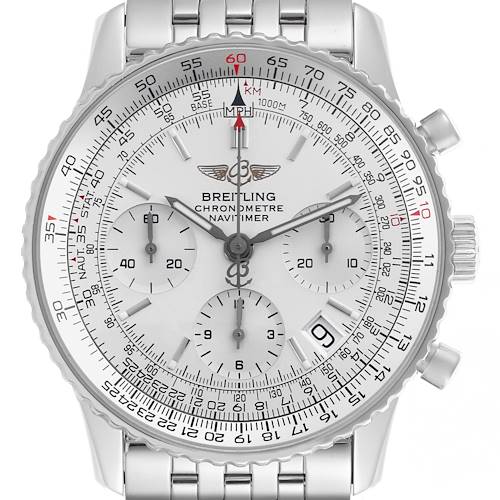
Breitling Navitimer Chronograph Silver Dial Steel Mens Watch A23322 Box Papers

Breitling Navitimer 1884 Limited Edition Steel Mens Watch A21350 Box Card
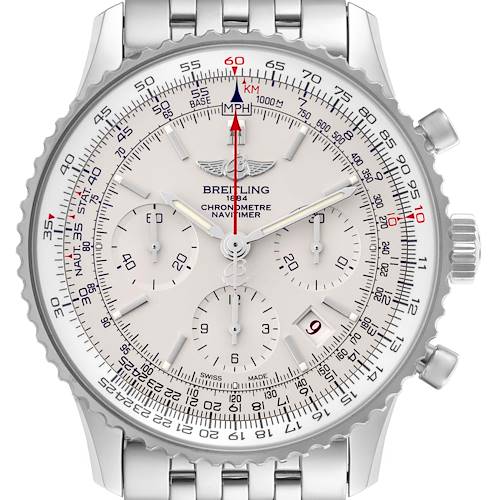
Breitling Navitimer 01 Limited Edition Silver Dial Steel Mens Watch AB0123

Breitling Navitimer 01 Panda Dial Steel Mens Watch AB0120 Box Card
Immerse yourself in the thrill of aviation with Breitling Navitimer watches. Serving as the pinnacle model of the brand, the Breitling Navitimer stands as an enduring symbol of pilot's watches, revered for its iconic status. The distinctive circular slide rule bezel of the Navitimer instantly conjures thoughts of Breitling timepieces.
Introduced in 1952, the name "Navitimer," derived from "navigation" and "time," reflects its purpose: aiding pilots in essential calculations such as speed, flight durations, fuel usage, and wind adjustments in a user-friendly manner during flights. The Navitimer collection has evolved over time, offering a diverse array of interpretations ranging from chronographs to time-only models with various movements.
In 2009, Breitling unveiled its first in-house movement, the Breitling B01, which now powers the heart of the Navitimer. Subsequent advancements have seen the development of sophisticated iterations like the B04 (featuring a GMT function), the B05 (world time function), and the manual caliber B09 used in the re-edition of the ref 809.
While digital tools now offer flight calculations, the timeless design and high-performance calibers of the Breitling Navitimer continue to make it a preferred timepiece for modern living. Incorporating advanced features such as chronograph complications, date functions, and an array of dial colors and materials—including luxurious leather straps—the Navitimer ensures there is a model to suit every individual style.
How to Sell My Breitling Navitimer
Sell or trade-in your Breitling Navitimer for the best price with SwissWatchExpo. SwissWatchExpo makes it easy to sell or trade in your used or pre-owned Breitling Navitimer to keep your luxury watch collection fresh!
Frequently Asked Questions
What Is A Breitling Navitimer?
The Breitling Navitimer is the brand’s flagship collection. Built especially for pilots, its name comes from the combination of the words “navigation” and “timer”. It is characterized by its iconic slide rule, which enables pilots to compute for crucial calculations for a safe and well-controlled flight. When it was launched, the Navitimer was the choice timepiece of companies like Boeing and groups like the Aircraft Owners and Pilots Association.
Since its introduction in 1952, Breitling has created numerous versions of the Navitimer chronograph. These include added complications like the GMT, rattrapante, and perpetual calendar functions. In 2018, Breitling introduced the time and date only Navitimer 1.
Does The Breitling Navitimer Hold Value?
The Breitling Navitimer range offers a combination of a timeless design, rich heritage, and impeccable craftsmanship that make them valuable to collectors. People will continue to invest in them due to these qualities, and with steady demand comes a firm grip on value.
How Often Do You Need To Service A Breitling?
Breitling recommends a maintenance service every 2 years, which should include: checking movement parameters and watch functions, changing all seals, checking water resistance, cleaning the case and metal bracelet; changing the battery for quartz watches.
They also recommend a complete service every 4 to 6 years, which would involve a complete disassembly of the watch, and cleaning and exchange of standard movement parts.
These are just recommendations, as there can be signs that your watch needs to be checked sooner rather than later. Here’s our guide on Signs It’s Time for Watch Maintenance.


